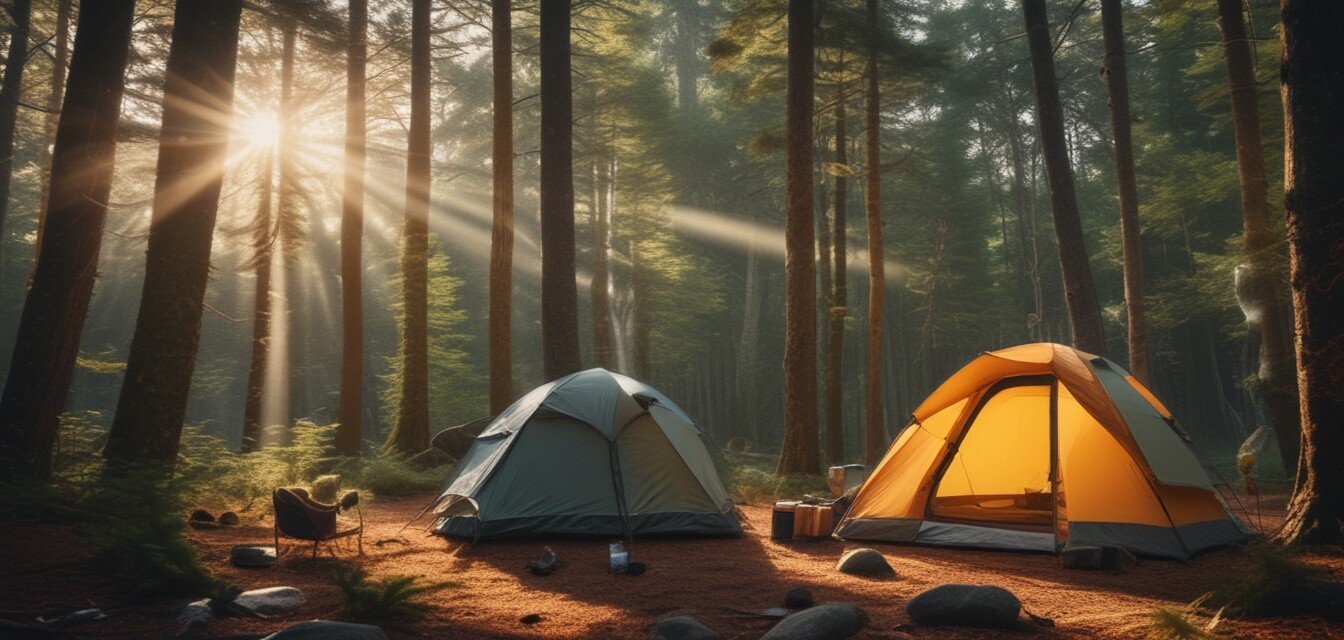
How to Build Your Own Solar-Powered Camping Setup
- Understanding the components of a solar-powered camping setup.
- Guidelines on selecting the right solar equipment.
- Step-by-step instructions for assembling your solar setup.
- Benefits of using solar energy while camping.
- Considerations for maximizing the effectiveness of your setup.
Creating a solar-powered camping setup can enhance your outdoor adventures by providing you with a reliable source of energy. It allows you to charge your devices, use lights, and even cook meals without relying solely on traditional fuel sources. In this guide, we'll walk you through the essential elements of setting up your very own solar-powered camping experience.
Understanding the components of a solar-powered camping setup
Before diving into the assembly process, it's important to know the components that make up your solar setup. Here’s a simple breakdown:
| Component | Description |
|---|---|
| Solar Panels | The primary source of solar energy, converting sunlight into electricity. |
| Battery Storage | Stores energy for later use when sunlight isn't available. |
| Charge Controller | Protects the battery from overcharging and regulates energy flow. |
| Inverter | Converts DC power from the batteries to AC power for household devices. |
| Portable Devices | Charging devices such as lights, cookers, and more. |
Choosing the Right Solar Equipment
When it comes to selecting your solar equipment, several factors need to be considered:
- Power Needs: Estimate how much energy you will need based on your activities.
- Portability: Choose lightweight equipment that's easy to transport.
- Durability: Ensure all your gear can withstand the elements.
- Compatibility: Make sure your solar panels and batteries match in voltage.
Popular types of solar equipment
Here’s a list of some common solar equipment you'll want to consider:
- Portable Solar Panels: Easy to set up and pack away.
- Marine Batteries: Recommended for reliable energy storage.
- Solar Charge Controllers: Necessary for maintaining battery health.
- Solar Generators: Convenient for an all-in-one power solution.
- Solar Lights: Great for illuminating your campsite.
Step-by-step guide to assemble your solar-powered setup
Now that you have your components, it's time to assemble your solar-powered camping setup. Follow these steps:
- Select a Location: Choose a flat and unobstructed area for your solar panels, ensuring they have maximum sunlight exposure.
- Set Up Solar Panels: Place your solar panels on a stable surface and angle them towards the sun.
- Connect Charge Controller: Connect the charge controller to your solar panels and battery to regulate energy.
- Install Battery and Inverter: Connect your battery to the charge controller and then connect the inverter to the battery.
- Test Connections: Before your camping trip, test all connections to ensure they work properly.
- Install Portable Devices: Connect your lights, chargers, and other devices to the inverter as needed.
Benefits of using solar energy while camping
Switching to a solar-powered setup during your camping adventures has several advantages:
- Eco-Friendly: Reduce your carbon footprint and enjoy nature without pollution.
- Cost-Effective: After the initial investment, solar energy can save you money on fuel.
- Convenience: Easily charge devices and power lights without wandering far from your campsite.
- Independence: No need to rely on external power sources.
Maximizing the effectiveness of your solar setup
To get the most out of your solar-powered camping setup, consider the following tips:
- Regular Maintenance: Clean solar panels frequently to maximize efficiency.
- Battery Management: Monitor battery levels and recharge as needed.
- Energy Efficiency: Use LED lights and energy-efficient devices.
- Optimal Placement: Adjust solar panel angles throughout the day as the sun moves.
Conclusion
Building your own solar-powered camping setup is a rewarding project that can transform your outdoor experiences. By understanding your energy needs and effectively choosing the right equipment, you can ensure that you're well-equipped for your next adventure. Remember, the benefits of using solar energy extend beyond convenience—they're a step towards a more sustainable camping journey.
For more insights on solar equipment options, be sure to check out our [Solar Camping Tents](https://excitementnow.com/products/solar-camping-tents) and [Portable Solar Panels](https://excitementnow.com/products/portable-solar-panels)!
Explore more in our [Buying Guides](https://excitementnow.com/blog/buying-guides) to upgrade your camping gear today!